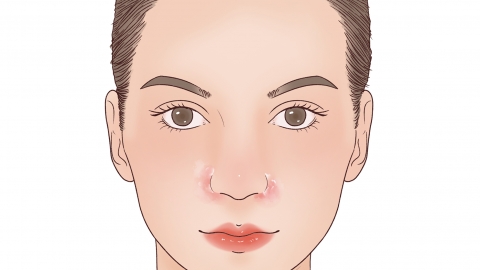What can be done about a large nose?
A large nose may be caused by genetic factors, growth and development, rosacea, sinusitis, acromegaly, and other factors. It can usually be improved through cosmetic surgery, medication, or treatment targeting the underlying condition. If there are concerns or worsening symptoms, timely medical consultation is recommended. Detailed analysis is as follows:

1. Genetic factors: The shape and size of the nose are largely influenced by genetics. If someone in the family has a large nose, the likelihood of an individual having a large nose also increases. If improvement is desired, cosmetic procedures such as rhinoplasty can be considered to adjust the shape and size of the nose.
2. Growth and development: During the growth process, the shape and size of the nose may change along with overall body development. In adolescence, the nose may gradually enlarge due to the growth of bones and cartilage. This is a normal developmental process and typically does not require special treatment. If dissatisfaction with nose size persists into adulthood, comprehensive nasal整形 surgery such as rhinoplasty or alar base reduction may be considered.
3. Rosacea: Rosacea may be related to genetic and immune system abnormalities. It primarily manifests as facial redness and dilated capillaries. Long-term recurrent episodes may lead to thickened, rough nasal skin, making the nose appear larger. Treatment options include medications such as tinidazole capsules, tretinoin cream, and adapalene gel, as well as physical therapies like laser treatment and photodynamic therapy, as directed by a physician.
4. Sinusitis: Allergies or bacterial infections may cause sinusitis, leading to inflammation of the nasal mucosa, which can result in nasal congestion, swelling, and a temporarily enlarged appearance of the nose. Patients may also experience symptoms such as nasal discharge, runny nose, and sneezing. Treatment may include nasal corticosteroids such as budesonide nasal spray, mometasone furoate nasal spray, or fluticasone propionate nasal spray, as prescribed by a doctor. Once the inflammation subsides, the nasal appearance may return to normal.
5. Acromegaly: Acromegaly is an endocrine disorder caused by excessive secretion of growth hormone, which may lead to abnormal growth of facial bones and soft tissues, making the nose appear larger. Patients may also experience symptoms such as enlarged hands and feet and rough skin. Treatment options include medications such as octreotide acetate injection, lanreotide acetate prolonged-release injection, and bromocriptine mesylate tablets, as guided by a physician.
In daily life, maintaining a healthy lifestyle including a balanced diet, moderate exercise, and a positive mindset is recommended to enhance overall health and immunity, thereby reducing the risk of disease.








